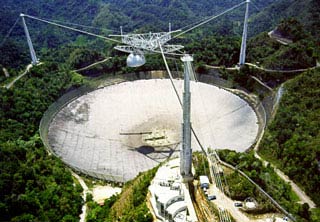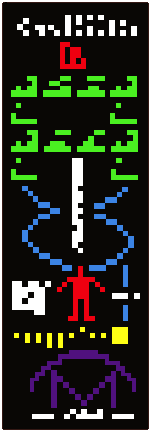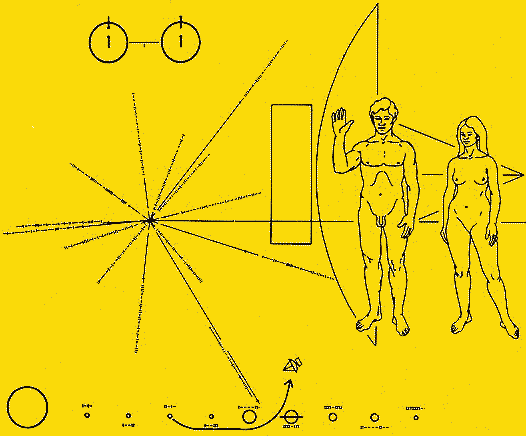Communicating with Aliens
What would we say?
A first introduction would not need to be very long. Just the contact in itself
would be monumental enough. However, we'd want to make sure they realized it was
from an intelligent civilization (not a pulsar, or other natural phenomenon in
the universe) and you might imagine we'd want to let them know
a bit about ourselves, our planet, and the star we call our Sun. Drake was the
first to begin sending message, 30 years ago, using the Greenbank radio
Telescope in Virginia. He directed the message at two stars
(about 10 ly). We've not heard back yet.

At the commissioning of the world's largest single dish radio telescope, Arecibo Observatory in Puerto Rico, a simple message was sent.
This occurred 17 years ago, meaning any star
within 17 light years will have received it (perhaps 100s of stars).  Any star
within 8 light years would have had time to respond (perhaps 10s of stars).
The message was extraordinarily simple. Nothing but 1's
and 0's.. a binary code. Sort of an 'on', 'off', switching, with a long pause between
the message.
Exactly 1,679 1s and 0s were sent (a number of times!). 1,679 was selected because it is
divisible by just two numbers, 73 and 23, both prime numbers themselves.
Any star
within 8 light years would have had time to respond (perhaps 10s of stars).
The message was extraordinarily simple. Nothing but 1's
and 0's.. a binary code. Sort of an 'on', 'off', switching, with a long pause between
the message.
Exactly 1,679 1s and 0s were sent (a number of times!). 1,679 was selected because it is
divisible by just two numbers, 73 and 23, both prime numbers themselves.  It represents
a 2-D image and only one way would give you an obvious pattern.
It represents
a 2-D image and only one way would give you an obvious pattern.
Picture Representation
The Pioneer 10 and 11 space crafts, sent in the 1970s to take pictures of Jupiter,
Saturn, Neptune and Uranus, have now left our solar system. They each carry with
them a plaque, attached to the outside, with the image on the right.